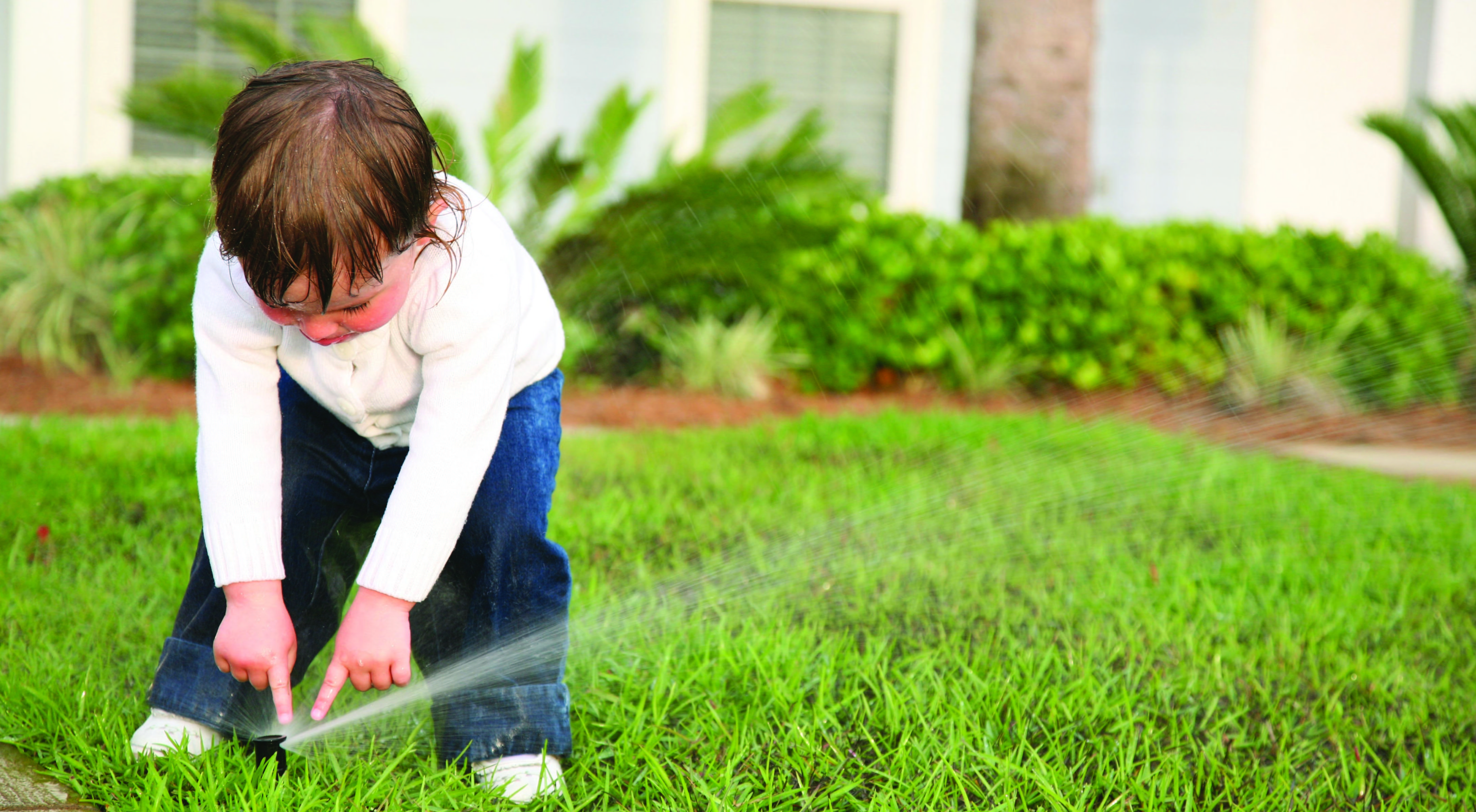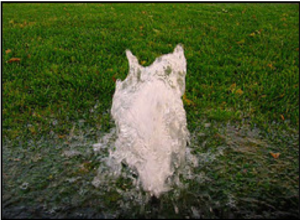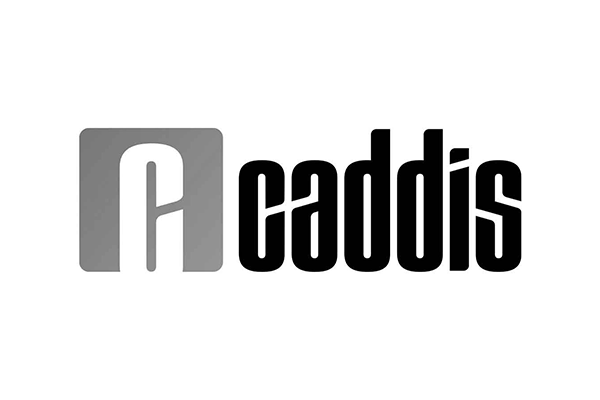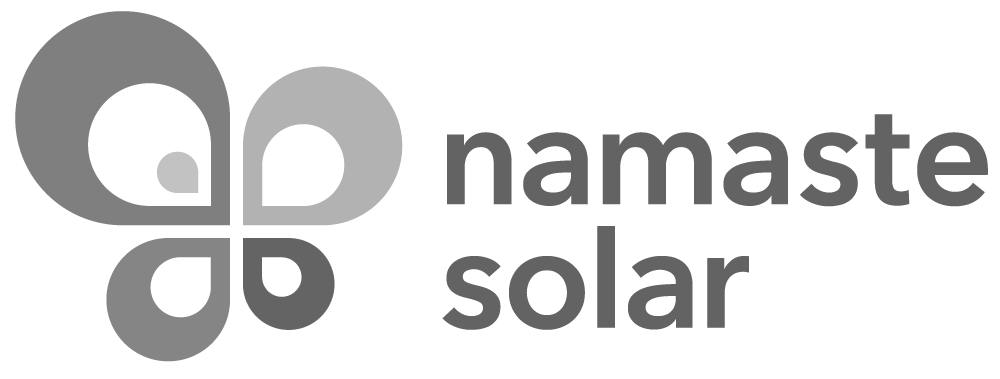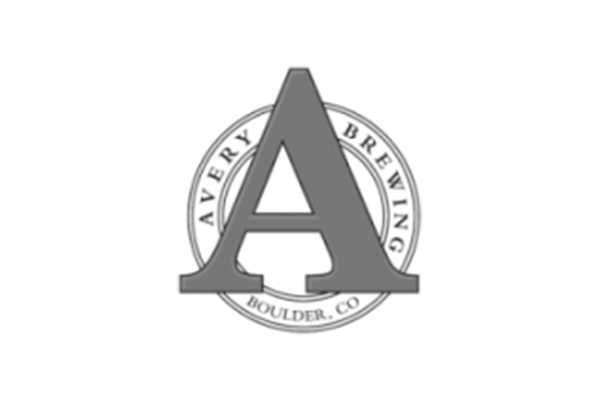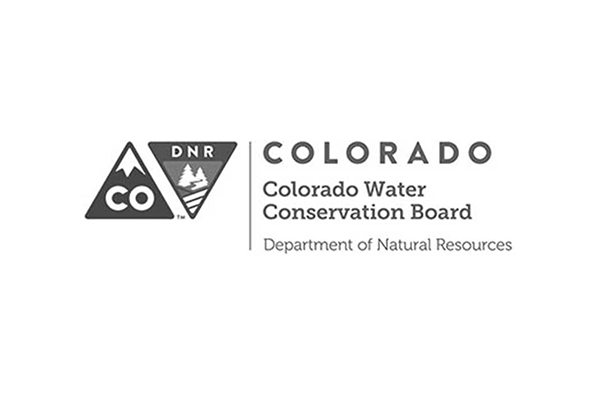During your sprinkler evaluation, chances are our associate found a few issues. Not to worry- over 97% of the sprinkler systems we assess have at least one problem that leads to water waste. Luckily, we’re here to help! Below, you’ll find descriptions of common sprinkler system issues and how to fix them. If you need a trustworthy landscaper to help with adjustments or repairs, you can search for a certified professional through the Irrigation Association or Associated Landscape Contractors of Colorado.
Overspraymore details
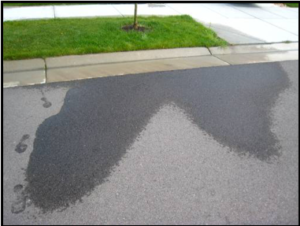 Overspray is by far the most common water-wasting issue we find on sprinkler systems. As the name implies, overspray happens anytime the water from a sprinkler head overshoots the grass and waters something that it shouldn’t, like a driveway or fence. Overspray often occurs in narrow areas such as side-strips (the thin area of grass between the sidewalk and the street).
Overspray is by far the most common water-wasting issue we find on sprinkler systems. As the name implies, overspray happens anytime the water from a sprinkler head overshoots the grass and waters something that it shouldn’t, like a driveway or fence. Overspray often occurs in narrow areas such as side-strips (the thin area of grass between the sidewalk and the street).
Overspray can also occur with inappropriate head types or nozzles, incorrect spray patterns, poor head spacing, tilted heads, or high pressure. Since each issue that causes overspray has a unique solution, read on below to learn how you can reduce overspray in your system.
Broken Headsmore details
Did you know that a broken sprinkler head can waste 25,000 gallons in 6 months?! While that may be alarming, the good news is that broken heads are usually easy to spot and replace. A broken head can range anywhere from a small chip in the nozzle to a geyser-forming break, like the one in the image to the left. Heads can break due to wear and tear over time, high water pressure, or damage from lawn equipment.
Broken heads will almost always have a water pooling around their base and often can’t water the area that they are supposed to water properly. So, a broken head is not only a huge water waster, but also prevents your grass from getting the water it needs.
A broken head can only be fixed by replacing it with a new one. It’s best to purchase the same make and model as the head you’re replacing. You can usually take a picture of the broken head into your local hardware store and they should be able to help you identify the right head to buy. Once you have the new head, carefully dig a hole around the broken head, exposing the connection to the underground pipes (it helps to keep the dirt and sod you dig up in one piece). Screw off the old head, screw on the new head, and return the dirt and sod to the hole, making sure the head is level with the ground.
Here’s a great video from Silver Cymbal that shows the process of digging up and replacing a head.
Tilted Headsmore details
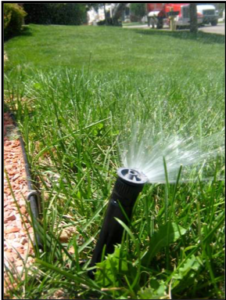 Over time, sprinkler heads settle, tilt, and sink due to the natural compaction of soil, foot traffic, and lawn mowers running over them. When a sprinkler head tilts, it causes uneven watering due to changes in the spray pattern. This means some areas of your grass won’t get enough water (or any at all), while other areas might get too much. This can lead to brown spots, overspray, or soggy areas.
Over time, sprinkler heads settle, tilt, and sink due to the natural compaction of soil, foot traffic, and lawn mowers running over them. When a sprinkler head tilts, it causes uneven watering due to changes in the spray pattern. This means some areas of your grass won’t get enough water (or any at all), while other areas might get too much. This can lead to brown spots, overspray, or soggy areas.
Fixing a tilted head is fairly simple, but take care to not to hit and break the underground pipes. Use a shovel to dig around the head, remove the sod, and carefully clear the dirt around the head. Next lift and straighten the head, packing soil under and around it until it is even with the ground and can easily clear the grass when it pops up. Then replace the sod piece back in place over the sprinkler head. For a more detailed explanation, watch this video from Orbit.
Low Headsmore details
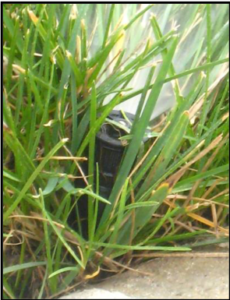 Over time, sprinkler heads settle, tilt, and sink due to the natural compaction of soil, foot traffic, and lawn mowers running over them. When a head sinks low enough, water from the head isn’t able to clear the top of the grass that surrounds it. So, the grass right around the head will get too much water, whereas the grass a few feet away won’t get enough. This can lead to brown spots, soggy areas, or misting.
Over time, sprinkler heads settle, tilt, and sink due to the natural compaction of soil, foot traffic, and lawn mowers running over them. When a head sinks low enough, water from the head isn’t able to clear the top of the grass that surrounds it. So, the grass right around the head will get too much water, whereas the grass a few feet away won’t get enough. This can lead to brown spots, soggy areas, or misting.
Fixing a sunken head is fairly simple, but take care to not hit and break the underground pipes. Use a shovel to dig around the head, remove the sod, and carefully clear the dirt around the head. Next lift and straighten the head, packing soil under and around it until it is even with the ground and can easily clear the grass when it pops up. Then replace the sod piece back in place over the sprinkler head. For a more detailed explanation, watch this video from Orbit.
Blocked Headsmore details
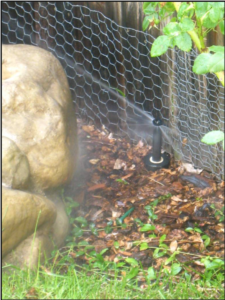 Blocked heads have a nearby obstruction that prevents water from getting to where it needs to go. The most common obstructions are rocks, overgrown bushes and trees, landscape edging, or even tall grass. When something blocks the spray from a sprinkler, some parts of the grass won’t get enough water and can turn brown.
Blocked heads have a nearby obstruction that prevents water from getting to where it needs to go. The most common obstructions are rocks, overgrown bushes and trees, landscape edging, or even tall grass. When something blocks the spray from a sprinkler, some parts of the grass won’t get enough water and can turn brown.
To fix this, remove the obstruction. Trim overgrown bushes and tree limbs near the head. Move landscaping rocks or edging that sit in front of the head or prevent the head from popping all the way up. If moving the obstruction isn’t possible, you may have to move the head to a new location where it is no longer blocked. In most cases, this takes more time, money, and expertise than removing the obstruction, so we recommend hiring an irrigation professional if moving a sprinkler head is necessary.
Clogged Nozzlesmore details
Debris, such as small pebbles or sand, can clog a sprinkler nozzle or filter. 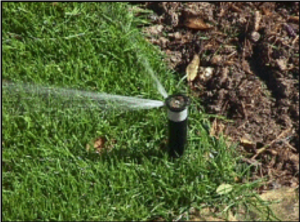 Clogs block water from coming out of part or all of the nozzle, causing an uneven spray pattern. This can lead to dry, brown spots.
Clogs block water from coming out of part or all of the nozzle, causing an uneven spray pattern. This can lead to dry, brown spots.
Luckily, a clogged nozzle on a spray or high efficiency head is one of the easiest problems to fix. First, make sure the system is off, so that you don’t get soaked! Lift the stem out of the head by pulling up on the nozzle with your fingers, a screwdriver, or a pair of reverse pliers. Hold or clamp the stem to keep it up, unscrew the nozzle, and remove the filter from the stem. Wash out any debris in the filter or nozzle in a small bucket of water. Put the clean filter back into the stem and screw the nozzle back on. You may need to turn the stem right or left so that the nozzle is pointing in the right direction.
For a better look at unclogging a spray head, check out this video from the City of Round Rock, Texas.
For information on unclogging a rotor head, check out this video from Rainbird.
Mixed Headsmore details
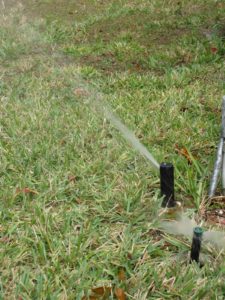
A zone that has more than one type of sprinkler head is a mixed zone. This is a common design flaw that can cause uneven watering because different head types put out water at different rates. Spray heads can emit 2-3 times more water than rotor heads and 3-6 times more water than high efficiency (HE) heads in the same amount of time. This means mixed zones tend to water grass very unevenly.
Programming the run time for a mixed zone can be quite a challenge for this reason. No matter what time you input, some areas of the grass will either be getting too much or too little water. Too much water creates soggy areas and excess water waste whereas too little water creates brown spots.
If your zone is a mix of spray and HE heads, there is a easy solution. Most brands of spray nozzles and HE nozzles are one standard size, so you can simply swap out all the spray nozzles for HE nozzles or vice versa. To swap out a nozzle, first lift the stem out of the head by pulling up on the nozzle with your fingers, a screwdriver, or a pair of reverse pliers. Hold or clamp the stem to keep it up, unscrew the old nozzle, and screw the new nozzle on. You may need to turn the stem right or left so that the nozzle is pointing in the right direction.
Fixing a mixed zone that is a mix of sprays and rotors, or HE heads and rotors, is unfortunately more complicated. Rotors cover a larger distance than spray or HE heads, so you typically can’t just swap them out. Depending on the design of your system, we suggest hiring a sprinkler professional to discuss options for creating a more uniform zone.
Mistingmore details
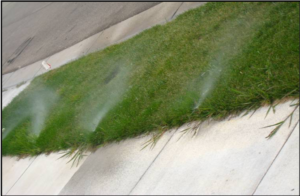 Misting turns the normal spray from a sprinkler head into a cloud of fine mist consisting of tiny water droplets. Instead of landing on your grass, this mist easily blows away or evaporates. Misting may be caused by blocked heads, low heads, or clogged nozzles, but the most common cause is high water pressure.
Misting turns the normal spray from a sprinkler head into a cloud of fine mist consisting of tiny water droplets. Instead of landing on your grass, this mist easily blows away or evaporates. Misting may be caused by blocked heads, low heads, or clogged nozzles, but the most common cause is high water pressure.
To reduce misting caused by high pressure, there are several options to get your water pressure into the optimal range. You can install a pressure regulator on the valve that feeds the zone with high pressure. This works on zones with any head type. If you have a spray zone with high pressure, another option is to replace your heads with pressure-regulating heads. Finally, if your entire sprinkler system has high pressure, you may consider installing a pressure regulator on your main water line. Pressure regulators can be purchased online or your local hardware store that carries irrigation equipment.
Broken Pipesmore details
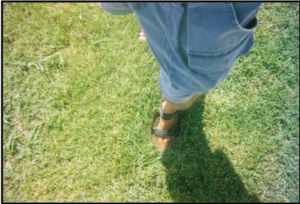 Broken or leaking pipes are the most difficult problem to see, since the water leaks out underground. Therefore, you may not see anything wrong just looking at the surface. This is unfortunate because, as you can guess, a broken pipe can waste a lot of water and go unnoticed for a long time.
Broken or leaking pipes are the most difficult problem to see, since the water leaks out underground. Therefore, you may not see anything wrong just looking at the surface. This is unfortunate because, as you can guess, a broken pipe can waste a lot of water and go unnoticed for a long time.
One possible sign of a broken pipe is if the sprinklers in a zone don’t pop up all the way and aren’t emitting water as far as they should be. Another clue that you might have a break is if your yard has overly soggy areas, particularly soggy areas in a straight line between 2 heads. In some cases, walking on this soggy grass may feel like walking on a waterbed, and you can see the nearby ground move up and down as you walk across it.
Pipes can break when they are impacted by tree roots or digging animals, or when they aren’t winterized properly. If you’re concerned you may have a broken pipe, we highly recommend hiring a sprinkler professional to find the leak and repair it for you.
Broken Valvemore details
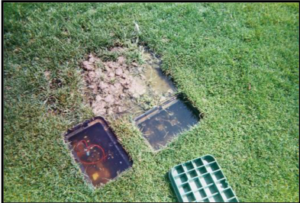 Control valves are a crucial part of your sprinkler system. Your control clock sends electric signals to your valves, telling them when to open and close. In other words, the valves control when a zone starts and stops watering based on what the control clock is telling it to do. If a valve is broken or clogged with debris, it creates two problems. First, the water flow is partially or completely blocked, so water cannot get to the sprinkler heads. Second, the valve might not be able to properly open (to start watering) or close (to stop watering). In some cases, the valve itself might be in perfectly good shape, but it is not working as it should due to issues with the wiring between the control clock and the valve.
Control valves are a crucial part of your sprinkler system. Your control clock sends electric signals to your valves, telling them when to open and close. In other words, the valves control when a zone starts and stops watering based on what the control clock is telling it to do. If a valve is broken or clogged with debris, it creates two problems. First, the water flow is partially or completely blocked, so water cannot get to the sprinkler heads. Second, the valve might not be able to properly open (to start watering) or close (to stop watering). In some cases, the valve itself might be in perfectly good shape, but it is not working as it should due to issues with the wiring between the control clock and the valve.
If you notice that you have a zone where the heads do not pop up all the way or a zone that remains on after it should be done watering, you may have a broken valve.
A broken valve will need to be repaired or replaced. We recommend hiring a sprinkler professional for this.
Improper Pressuremore details
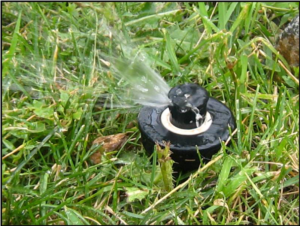 Improper pressure can cause inefficient watering and some serious problems with your sprinkler system. High pressure causes smaller droplets to be sprayed out of the sprinkler head, known as misting. This results in water blowing away or evaporating. Consistently high pressure can also cause sprinkler heads to wear out more quickly, meaning you’ll have to replace parts more frequently. It also makes your system more susceptible to breaks and leaks. High pressure can be addressed by installing a pressure regulator (see the “Misting” section for more info).
Improper pressure can cause inefficient watering and some serious problems with your sprinkler system. High pressure causes smaller droplets to be sprayed out of the sprinkler head, known as misting. This results in water blowing away or evaporating. Consistently high pressure can also cause sprinkler heads to wear out more quickly, meaning you’ll have to replace parts more frequently. It also makes your system more susceptible to breaks and leaks. High pressure can be addressed by installing a pressure regulator (see the “Misting” section for more info).
Low pressure prevents heads from popping up all the way (like the image to the left), resulting in poor coverage and dry, brown spots of grass. If you only have one or two zones with low pressure, it may indicate a problem such as a broken head, leaking pipe, or malfunctioning valve. If your system is in good shape, but you still have low pressure in most or all zones, fixing it may be a challenge. Consider contacting a sprinkler professional to discuss options such as reducing the number of heads you have per zone.
Poor Head Spacingmore details
 When a sprinkler system is designed, it should incorporate “head-to-head coverage.” This means the spray from one head should reach the closest heads around it to ensure a complete distribution of water. Without head-to-head spacing, a zone probably has uneven watering, which can lead to dry spots.
When a sprinkler system is designed, it should incorporate “head-to-head coverage.” This means the spray from one head should reach the closest heads around it to ensure a complete distribution of water. Without head-to-head spacing, a zone probably has uneven watering, which can lead to dry spots.
In some cases, heads may be too close together, which causes too much overlapping of spray. These areas may be soggy or grow mushrooms.
Depending on how your zone is set up, you may need to just move one head or you may need to have the whole zone redesigned. If you choose to go this route, we definitely recommend working with a sprinkler professional to ensure the new design incorporates proper head spacing.
Inappropriate Head Typemore details
 There are three common types of sprinkler heads: spray, rotor, and high efficiency (HE). Spray heads have a shorter throw distance (also known as radius), meaning they are designed to cover smaller areas of grass like a front yard or side strip. Rotor heads, on the other hand, have much longer throw distances so they can cover larger areas of grass like a backyard or a ball field. HE heads can be used for small or large patches of grass, depending on how the system is designed.
There are three common types of sprinkler heads: spray, rotor, and high efficiency (HE). Spray heads have a shorter throw distance (also known as radius), meaning they are designed to cover smaller areas of grass like a front yard or side strip. Rotor heads, on the other hand, have much longer throw distances so they can cover larger areas of grass like a backyard or a ball field. HE heads can be used for small or large patches of grass, depending on how the system is designed.
If spray heads are used on larger areas of grass, it’s likely that that grass won’t be getting covered with water as well as it should. This results in dry, brown spots. Alternatively, if rotor heads are used on a small patch of grass, you’ll have severe overspray and water waste like in the image on the left.
To fix the issue, replace the inappropriate head type with the correct one. In some cases, if spray heads are used on a larger zone, you may be able to replace the spray nozzles with HE nozzles. If you choose this option, be sure to increase the run time on that zone. We suggest to triple the run time since HE nozzles emit 3 to 6 times less water than spray nozzles do in the same period of time.
An inappropriate head type may also refer to using sprinklers to water anything other than grass. Vegetation such as trees, shrubs, flowers, and veggie gardens should be watered using drip irrigation, not sprinklers. You can see how to convert a spray zone to a drip zone in this video from Rain Bird.
Incorrect Nozzlemore details
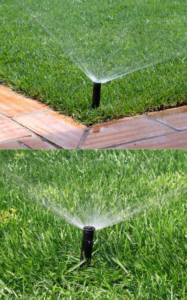 Incorrect nozzles are mostly found on spray heads. A nozzle may be incorrect due to the arc or the radius.
Incorrect nozzles are mostly found on spray heads. A nozzle may be incorrect due to the arc or the radius.
The arc is the spray pattern emitted by the nozzle. In other words, if you look straight down at a spray head when the water is running, the arc is the shape the spray of the water makes. The arc is measured in degrees. So, if a nozzle has a 90 degree pattern, it waters a quarter of a circle; 180 degrees waters half a circle; and 360 degrees waters a full circle. Some nozzles are fixed at these specific arcs, and other nozzles are adjustable between zero and 360 degrees. Adjustable nozzles are called variable arc nozzles (VANs). VANs are ideal to use in areas with odd shapes. Lastly, some nozzles don’t spray in a circular pattern, but instead spray in a strip pattern (for those long, narrow strips between the sidewalk and road).
Generally, heads in the corner of your yard should have a 90 degree arc (like the top image on the left). Heads on the side edge of your grass should have a 180 degree arc, and heads in the middle of your grass should have a 360 degree arc. So, an example of an incorrect nozzle is a head in the middle of the grass having a 90 degree nozzle, like the bottom image on the left. If the arc is smaller than it should be, part of your grass will not get watered, and if the arc is larger than it should be, you will have significant overspray and wasted water.
The radius of a nozzle refers to how far water sprays out from the head. Most brands carry 4-6 nozzle sizes that range from a 4 foot to an 18 foot radius. Similar to the arc, if the nozzle radius is much smaller than it should be, part of your grass will not get watered, and if the radius is much larger than it should be, you will have significant overspray and wasted water. To know what radius size you need, measure the distance between the head and the next closest heads. Choose the radius that is closest in size (if the measurement is between sizes, choose the larger one).
For most heads, replacing a nozzle is simple and cheap. First lift the stem out of the head by pulling up on the nozzle with your fingers, a screwdriver, or a pair of reverse pliers. Hold or clamp the stem to keep it up, unscrew the old nozzle, and screw the new nozzle on. You may need to turn the stem right or left so that the nozzle is pointing in the right direction.
For information on knowing the right nozzle size for rotor heads, check out the video from Sprinkler Warehouse.
No Check Valvesmore details
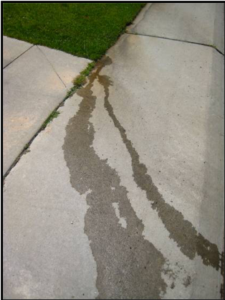 Check valves are a device inside a sprinkler head that essentially seals the head, preventing any water from leaking out of it after the zone turns off. This keeps water in the underground pipes and prevents gravity from pushing the leftover water out of the lowest heads in a zone. Heads without a check valve might have a small stream of water coming out of them after the zone turns off. This leads to a lot of water waste.
Check valves are a device inside a sprinkler head that essentially seals the head, preventing any water from leaking out of it after the zone turns off. This keeps water in the underground pipes and prevents gravity from pushing the leftover water out of the lowest heads in a zone. Heads without a check valve might have a small stream of water coming out of them after the zone turns off. This leads to a lot of water waste.
If you don’t have check valves, think about installing new heads with check valves built in on the lowest points of your yard, particularly if you have a steep slope. Many newer models of heads have check valves built in. So when purchasing a new head, be sure to look for models that have check valves. Some heads will have the initials “SAM” (Seal-A-Matic) on their base, which indicates that they have a check valve.

